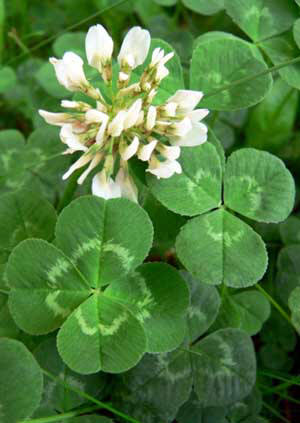Andrew Griffiths considered “Love in a Cold Climate” for the title of his new paper he co-authored and was this week published in the prestigious science journal, The Plant Cell, AgResearch reports today..
Love in a Cold Climate was considered because the paper reveals how “two genomes, one a beach bunny and the other a snow bunny, came together during the last European glaciation 15-28,000 years ago and then took over the world”.
In the upshot, the title became “Breaking free: the genomics of allopolyploidy-facilitated niche expansion in white clover”.
But as Andrew, an AgResearch senior scientist explains, the story of white clover (Trifolium repens) is no less compelling.
“This humble little clover is found in grasslands around the globe and it’s a powerhouse in agriculture where it provides quality forage and fixes nitrogen, which reduces the need for chemical fertilisers. But it also has a fascinating back story.”
It’s a back story he wrote with Danish researchers Roger Moraga and Stig Uggerhøj Andersen and colleagues at AgResearch and Massey University.
“What we’ve done, by sequencing white clover and its ancestors, is enhance our understanding of not only how and when the clover’s ancestors merged, but why this versatile and successful legume behaves and responds the way it does.
“And in doing so, it feels like the team is standing on the shoulders of giants because what we have done, through very recent advances in technology, confirms a lot of the thinking and theories pioneered by AgResearch’s Warren Williams and his team, who were the leading force in clover research.”
The paper details when and how white clover maintained the genetic diversity it inherited from its European parent species, one found in high alpine screes, the other on the coast within 100 metres of the shore.
“In this sense white clover is a bit like Frankenstein’s child. Two species from very different environments got together in a glacial refuge, joined genomes to create a successful ‘monster’ child that outcompeted its parents and went global. And the start of white clover wasn’t from a single event, but likely occurred many times during this ‘cohabitation’ time.
“Usually when genomes combine they rapidly throw out all the material they don’t need as it’s a biological cost to retain all this genetic information, but white clover kept it all. This provides a large genomic toolkit that it can use.
“Stig and his team in Denmark found that for 70% of the genes, white clover preferentially uses a version from one genome rather than the other, and sticks to this across a range of tissues. For the remaining 30% of genes, white clover switched between genomes depending on the tissue, and many of these genes were enriched for pathways that drive interactions with the environment.”
It appears that by making use of both genomes, white clover can fine-tune these pathways, which may be a secret to its ecological success.
“These findings helped lift the profile of the paper and will be a key part of our research going forward. We want to learn more about how white clover can leverage off this adaptability. We will seek to gain a better understanding of how these genomes ‘talk’ to each other and respond to environmental challenges. Using this information we might be able to make more accurate predictions of plant performance that could be incorporated into breeding programmes for drought tolerance or nitrogen fixation for example.”
Andrew said having the paper published was the culmination of a great team effort and was a career highlight.
The Plant Cell showcases quality, specialist plant science that is widely cited, he said.
Publication there was “a nice reward for the team”, who set out in 2012 to sequence the white clover genome, and ended up sequencing the ancestors as well.
This was a great outcome for the collaborators and co-author in Denmark, who had been having weekly Skype meetings over the past four years
Source: AgResearch












